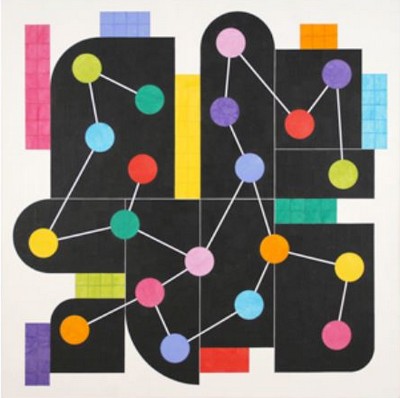Fujifilm, 50 ans de présence en Europe :
croissance durable et reconversion réussie dans plusieurs domaines
Cette année marque le 50è anniversaire de la présence de Fujifilm en Europe. À partir de son activité initiale de pellicules photographiques, l'entreprise s'est diversifiée pour devenir une société leader mondial dans de nombreux champs d'application. Le 7 juillet 1966, Fuji Photo Films Europe Gmbh était enregistré au registre du commerce de la ville de Düsseldorf. Son développement s'est d'abord poursuivie au Royaume-Uni en 1976, puis sur tout le continent avec des sites de production et des bureaux commerciaux. Aujourd'hui, l'entreprise est dotée d'un large réseau à travers l'Europe.
Fujifilm s'est d'abord fait connaître en tant que fabricant de pellicules photo. Ses célèbres boites de films vertes était en vente dans le monde entier et le dirigeable vert Fujifilm était devenu une scène familière lors des événements sportifs. Cependant, en 2000, le marché des films photo s'est écroulé alors que la photographie numérique prenait son envol. Fujifilm a relevé le défi avec, à la clé, une transformation commerciale au succès remarquable. La société n'a pas seulement survécu, elle s'est développée et diversifiée dans de nombreuses industries.
Aujourd'hui, le commerce traditionnel de pellicules photographiques représente moins de 1 % des bénéfices de Fujifilm. Au niveau international, l'entreprise est présente dans trois domaines principaux : Les solutions d'imagerie avec les équipements d'optique de pointe ainsi que les appareils photos, les matériaux et systèmes d'impression photo, les solutions d'information, où Fujifilm a une forte présence dans la santé, les systèmes graphiques, les matériaux pour écrans plats, les supports d'enregistrement, l'inspection industrielle et autres technologies, et les solutions de gestion documentaire, où l'entreprise fournit des imprimantes et produits connexes, production et autres services.
Le groupe Fujifilm est actif dans sept domaines d'activité à travers l'Europe, dont la santé, les systèmes graphiques, les supports d'enregistrement et les technologies photographiques. Fujifilm dispose de sept sites de production principaux dans la région, pour les plaques CTP, le papier couleur, les produits chimiques, mes encres, mes colorants pour le jet d'encre, les toners, les matériaux électroniques pour semi-conducteurs et les produits bio-pharmaceutiques. Le siège européen est basé à Düsseldorf. Le groupe compte une cinquantaine d'entités à travers l'Europe et emploie près de 5 000 personnes.
Investissement pour le développement futur
Fujifilm investit chaque année environ sept pour cent de son chiffre d'affaires consolidé dans la recherche et le développement en se focalisant sur les domaines d'activités à fort potentiel. La laboratoire de recherche avancée Fujifilm, ouvert en 2006 à Tokyo, représente l'unité de R&D stratégique qui pilote l'ensemble des capacités technologiques du groupe. Cette structure rassemble scientifiques et ingénieurs, sous la forme d'équipes de recherche internationales, qui travaillent sur la synthèse organique, les micro-revêtements multicouches, le micro-usinage de précision, le laser, l'impression et le traitement d'images.
Le Laboratoire de recherche de Tilburg, aux Pays-Bas, est le centre R&D européen. En collaboration avec les instituts universitaires de toute l'Europe, il développe des technologies de pointe centrées sur les membranes pour la séparation de gaz, les membranes échangeuses d'ions et les peptides recombinants. Le nouvel Open Innovation Hub à Tilburg stimule la co-conception sur base des technologies Fujifilm.
Succès dans de nombreux domaines
Fujifilm a remporté de nombreux succès et va continuer dans cette voie. Les fameux appareils photo de la série X, aux multiples récompenses prestigieuses, en sont un exemple. Les appareils Instax Fujifilm produisent des photos instantanées d'un simple clics, ils ont créé une nouvelle tendance mondiale. Beaucoup de gens se font une joie d'imprimer des photos prises avec leur smartphone, Les logiciels Fujifilm simplifie cette opération. L'entreprise fournit également des technologies de pointe pour les industries graphique. En tant que leader dans l'impression jet d'encre, elle sera l'un des principaux exposants de systèmes graphiques au salon Drupa. Fujifilm est pionnier dans le domaine de l'imagerie diagnostique pour les institutions médicales et a été un partenaire fiable pour les hôpitaux et les médecins depuis longtemps, tout en développant son offre dans le secteur de la santé.
Takaaki Kurose, Président de FUJIFILM Europe, explique : "La transition de fabriquant de pellicule photographique vers une entreprise high-tech globale a été possible parce que nous avons développé une stratégie de croissance solide et investissons énormément dans la R&D en nous appuyant sur une richesse technologique accumulée au fil des années. Nous fournissons la meilleure technologie disponible dans des domaines d'activité où nous pouvons sommes présents. Notre engagement envers l'innovation en est la garantie. L'Europe est un axe important pour nous, comme en témoigne notre Laboratoire de recherche de Tilburg aux Pays-Bas et l'Open Innovation Hub récemment créé.”
FUJIFILM EUROPE












